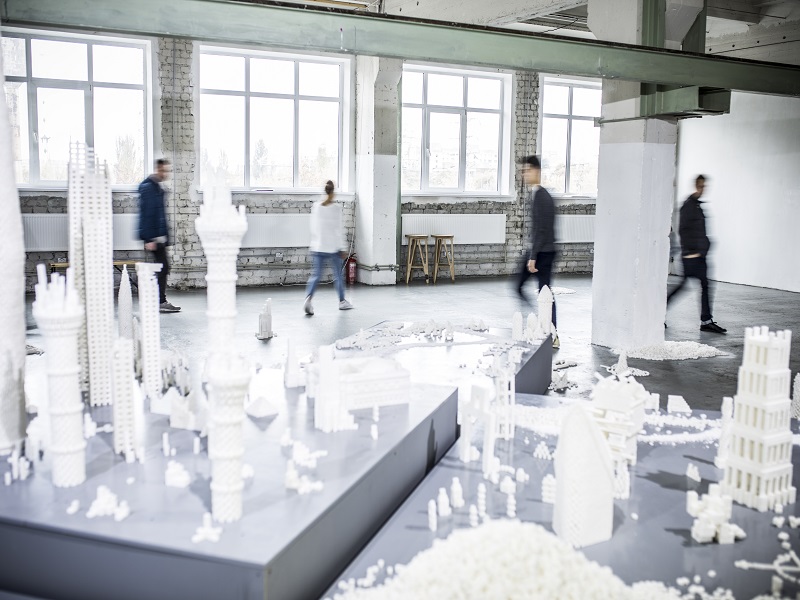
Louise Allen: “Social design is user centred and locally rooted”
What economic and social benefits can design bring to Ukraine?
Given the challenging economic and political circumstances in Ukraine over the past few years increased use of design could help to restructure services, drive efficiency and assist with significant challenges that communities face.
Around the world the benefits of applying design thinking and process across sectors to add value and to boost economic returns has been proven. Research shows that in the UK every pound invested in design translates into £4.12 net operating profit, £20+ net turnover. In 2015 the Irish Government invested €5 million in a year long initiative called Irish Design 2015. The investment gave a return of €55 million to the economy and significantly increased Ireland’s design profile internationally. This investment was made in 2014, when Ireland was still suffering the impact of the collapse of our economy.
Design is increasingly used to in social contexts as a way to re-imagine how communities and societies can deal with complex challenges and engage in more sustainable ways of living. Social design is user centred and locally rooted. In Kilkenny, near where I live there is participative design project called Callan Workhouse Union, which is a developing facility for art, design, research and community activities. One of their projects is working with the community, architects, planning authorities and local government to re-interpret the design of co-operative housing for mixed ability and ageing communities.
What design models can work and be successful in Ukrainian realities? And how we can implement them?
That really depends on what you want to achieve and what is available to invest. In Ireland, the Year of Irish Design (ID2015) has had a transformational effect nationally and internationally. It has elevated awareness of design at societal and government levels and has been the catalyst for numerous initiatives. Critically it has led to the development of significant relationships nationally and internationally and has put design on the government agenda. In 2017, following the publication of Ireland - Design Island a Consultation towards a National Design Strategy, the Minister for Jobs and Innovation convened a forum to develop a National Design Strategy and Policy. Some of the initiatives that came out of ID2015 had important economic impacts. For example we set up an International Trade Fund so that design companies could bring their products and services to international markets. The fund was open to a broad range of companies involved in product design, craft, fashion, animation, film, medical devices and architecture. Applicants had to have an export strategy and provide match funding which ranged from €1,000 - €4,000 per applicant the return on an initial investment of €100,000 was over €7 million.
What are the ways of promoting design and its benefits in society?
For Ukraine providing the infrastructure to promote and develop awareness of the value of design at home and abroad is important. When operating in a challenging economic environment it can be difficult to secure funding to develop new initiatives. Challenging times often provide a window of opportunity when communities and governments recognise that radical and systemic change is required. The use of a design led approach is increasingly recognised as a way to effect this type of change. Influencing decision makers and changing mind-sets takes time and investment but through the strategic use of existing infrastructure and networks much can be achieved. Below are some examples of projects that I developed in Ireland to promote design and its benefits to society.
To promote Irish Design nationally and internationally we developed two key programmes – the Global Irish Design Challenge and the Connections - Capsule Touring Exhibition. Both initiatives had a significant impact on highlighting and promoting the benefits of design to a wide audience.
The idea for the Global Irish Design Challenge grew from a desire to seek out and connect designers of Irish lineage living in Ireland or abroad. Designers with a strong affiliation to Ireland were invited to submit projects that addressed societal issues or provided an ingenious solution to a problem. The challenge, which was promoted through the Irish Embassy network abroad and the international design publication Dezeen, received over 140 entries from 14 countries. Following a selection process by an international panel of judges, over 50 projects were chosen for exhibition. To promote the challenge a website was developed and plans are underway to launch the challenge again in 2018. This type of initiative is relatively inexpensive to establish, by leveraging influential networks it can have a wide reaching impact.
http://globalirish.irishdesign2015.ie/
Connections - Capsule Touring Exhibition
The exhibition ‘Connections’ was generated in two distinct versions showcasing a combined total of over 30 designers and projects across a broad range of design disciplines. The first version engages themes of Life and Culture, and the second addresses themes of Society and Progress. Across these themes, each capsule presents two connected perspectives; of Irish design that connects with the world, and design that is shaping modern Ireland. The exhibition toured throughout 2015 to over 30 Irish Embassies and Consulates. Events hosted by Embassies abroad, included representatives from local media as well as industry buyers and design influencers to promote Irish design internationally. The capsule exhibition provided an insight into Ireland’s warmth and values and show the unexpected ways the Irish help define experiences and relationships around the world. It features carefully selected design projects that resonate internationally. Design disciplines represented in the capsule include architecture and engineering, animation, graphic design, medical devices and fashion. The costs to tour the exhibitions was funded through the Embassy Network.
http://connections.irishdesign2015.ie/
Design 4 Growth
To support the development of the sector we set up a number of training and mentoring programmes that work with small business to address entry into international markets and issues of scale. In 2016 we ran a Design 4 Growth programme that works with a mixed portfolio of companies who wish to use design process and methodology to build competitive advantage, develop new systems, services or products and drive efficiencies. The programme was developed following a report on the Impact of Design on the Wider Enterprise Base commissioned by the Irish Government. The Design 4 Growth programme includes a number of elements: Design Awareness Days, Design Audits, the development of a Design Brief and strategy. The programme aims to demonstrate the impact and value of design across a broad range of companies.
Short description of professional profile
Louise Allen is the Head of Innovation and Development at the Design & Crafts Council of Ireland and from 2014 was the Head of International Programmes for Irish Design 2015. Her experience ranges across design, enterprise, contemporary art and craft, education, curation and innovation.
In her various roles she has led on the strategic development for the design and craft sector, forged relationships nationally and internationally and has delivered several EU funded programmes. Louise co-curated Liminal-Irish Design at the threshold, the flagship exhibition for Irish Design 2015 that toured to design weeks in Milan, New York and Eindhoven and in 2016 and 2017 the Global Irish Design Challenge. In October 2016 Louise was elected President of the World Crafts Council Europe who represent 27 craft organisations from 17 EU countries. Louise holds a joint honours degree in Fine Art Print and Art History from the National College of Art and Design and a post-graduate diploma in European Cultural Project Management.




